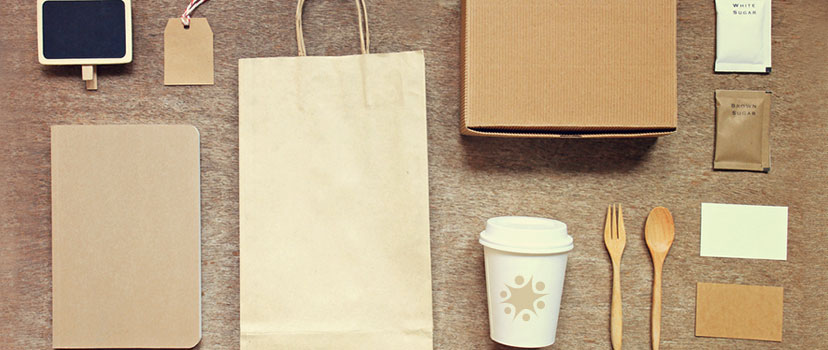You are walking down the aisle and looking for a bottle of wine for a bachelorette party – “Ooh that bottle looks sophisticated, but wait does that one have chocolate in it? That sounds good. Oh, wait! This one has girls at a get-together on the label, I’ll go with it!”
This experience illustrates how millions of consumers go about choosing what to buy. It’s not so much about what the product contains as much as how it is presented and packaged. The old adage of not judging a book by its cover doesn’t necessarily work in terms of graphic design. Consumers do shop more on impulse than via methodical strategies, so how your packaging design looks on the shelf, not to mention how it compares to the competition, will make or break it.
Let’s take a closer look at different ways packaging design can get people to pick up your product.
1) It stands out
Consider the fact that your product will be placed on shelves that contain a sea of other products that serve the same purpose as yours.
To make sure that your product gets picked, don’t be afraid to take a bold approach and think out of the box in order to effectively capture the shopper’s attention.
2) It’s not cluttered
Less is always more, and having a simple, uncluttered package design could work to your advantage. Your minimalist, clutter-free packaging can easily stand out in a sea of flashy package design.
To achieve simple yet effective packaging, you need to exercise restraint and focus on a single style element. The decorative accents you use should not overpower the product inside. And like the product itself, the packaging needs to be a reflection of your brand in order to come across as authentic.
3) It triggers an emotional response

A package that is aesthetically pleasing will always be easy on the eyes, but that does not necessarily translate to a personal connection with its target market. In order for a packaging design to be effective, it needs to evoke a positive emotion or a poignant memory, and appeal to people on an emotional level.
Just take a look at how tea labels are packaged. These usually have minimalist designs and comforting colors such as lavender, mint green, or chamomile white to subliminally evoke feelings of tranquility, relaxation, and peace of mind.
4) Information is hierarchal
To achieve hierarchy in package design, there should only be one main selling point indicated in the package. This can be a claim on how it can effectively remove stains in seconds, how it can be used for the longest time, or how it is the cheapest product on the market. Everything else willhave to trickle down after this main point.
You may be tempted to put in more information or put another style element on the package’s design. But remember shoppers are notorious for their short attention span – they will not be able to take in and absorb all the information and design elements on your packaging. Therefore, you need to choose the details you want your customers to immediately know about your product according to their importance.
5) It contains memorable assets

Your packaging needs to be distinctive or iconic in order to distinguish itself from the rest of the competition. Think in terms of Coca-Cola’s contoured bottle, which has become a memorable brand asset that is instantly recognizable.
To make packaging memorable, it needs to have the presence of powerful visual cues through the use of font, colors, textures, embossing, debossing, etc. These visual elements will create a focal point for your target consumers, making your product easy to remember.
6) It sells the key value offered
Provide the information on what sets your product apart from the rest, and make this information stand out in the package design.
Shoppers always want to compare features and attributes, so if the packaging’s description is the same as what your competition is saying, it won’t make any difference.
Don’t make absurd claims about taste or quality since these are all subjective, but rather, concentrate on what makes you different.
This could be your pricing advantage, the sources for your ingredients, or even your background story.
7) It’s humanized – not corporate

Today, shoppers prefer brands that make use of the counter-corporate movement. Traditional companies that make use of stock photography and clichéd tag lines fall on the wayside, while brands that are all about self-expression and individuality are appreciated.
Rather than using packaging space to make self-serving claims and empty promises, use it to connect with shoppers on a deeper level by relating to your target audience’s interests and worldview.
8) It provides clear value compared to your competition
Right from the start, shoppers will want to know the position of your brand within the pecking order. Are you a premium brand selling luxury goods, or an affordable private label brand? Or maybe you want to position yourself as a mid-ranger offering competitive prices?
Knowing how you want your brand to be perceived by consumers in terms of value makes packaging a whole lot easier. For instance, if you’re the premium brand, you will communicate your value to your audience with expensive packaging.
9) It defines your product in detail

Some businesses assume their target market already understands what their product is all about. Don’t make this same mistake, especially if you’re new to the scene. Instead, provide as much context as possible with your package design to avoid confusion (i.e. instructions on the back which show exactly how the product can be used).
10) It considers real store placement and conditions
Design with the physical store in mind. Take note of the physical environment where the product is going to be displayed. Frosted freezers may obscure the package, harsh lighting may cause shadows and reflections, and sharp edges and corners in the package may make it difficult to place on the shelves. Design accordingly.
Conclusion
A lot of factors go into product packaging, as you can see. Make sure all your bases are covered in order to create a package that will appeal to your audience. The competition is tough but by putting yourself in the customer’s shoes, you can ensure yours is the one that gets picked off the shelf.
Need help creating the perfect design? Head over to post a project on Design Crowd and see what ideas creative designers from around the world have to offer.
Want More?
DesignCrowd designers are experts at packaging up brands perfectly. Check out some of their accomplishments in these other articles:
10 DesignCrowd Packaging Designs Ready to Jump Off the Shelves
What If Brands And Products Were More Honest With Their Branding?
10 Graphic Design Services That Are Perfect For Crowdsourcing Contests

Written by Jessica Walrack on Monday, November 28, 2016
Jessica Walrack is a professional freelance writer with a background in sales and marketing. After 7 years in the corporate world, she stepped into the online sphere and has now been freelancing for 4 years. She specializes in helping businesses to create a stellar online experience for their audience in order to build industry authority and increase profitability. In her spare time, Jessica enjoys traveling all over the world with her family.

